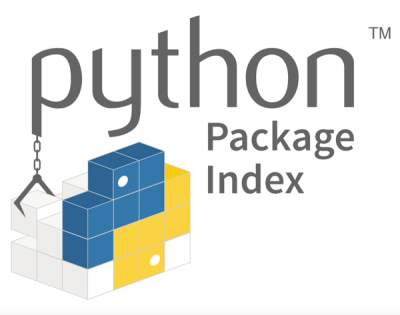Django Database Backup
.. image:: https://github.com/jazzband/django-dbbackup/actions/workflows/build.yml/badge.svg
:target: https://github.com/jazzband/django-dbbackup/actions
.. image:: https://readthedocs.org/projects/django-dbbackup/badge/?version=stable
:target: https://django-dbbackup.readthedocs.io/
:alt: Documentation Status
.. image:: https://codecov.io/gh/jazzband/django-dbbackup/branch/master/graph/badge.svg?token=zaYmStcsuX
:target: https://codecov.io/gh/jazzband/django-dbbackup
.. image:: https://jazzband.co/static/img/badge.svg
:target: https://jazzband.co/
:alt: Jazzband
This Django application provides management commands to help backup and
restore your project database and media files with various storages such as
Amazon S3, Dropbox, local file storage or any Django storage.
It is made to:
- Allow you to secure your backup with GPG signature and encryption
- Archive with compression
- Deal easily with remote archiving
- Keep your development database up to date
- Use Crontab or Celery to setup automated backups
Docs
See our official documentation at Read The Docs_.
Why use DBBackup
This software doesn't reinvent the wheel, in a few words it is a pipe between
your Django project and your backup storage. It tries to use the traditional dump &
restore mechanisms, apply compression and/or encryption and use the storage system you desire.
It gives a simple interface to backup and restore your database or media
files.
Management Commands
dbbackup
Backup your database to the specified storage. By default this will backup all
databases specified in your settings.py file and will not delete any old
backups. You can optionally specify a server name to be included in the backup
filename.
::
Usage: ./manage.py dbbackup [options]
Options:
--noinput Tells Django to NOT prompt the user for input of any
kind.
-q, --quiet Tells Django to NOT output other text than errors.
-c, --clean Clean up old backup files
-d DATABASE, --database=DATABASE
Database to backup (default: everything)
-s SERVERNAME, --servername=SERVERNAME
Specify server name to include in backup filename
-z, --compress Compress the backup files
-e, --encrypt Encrypt the backup files
-o OUTPUT_FILENAME, --output-filename=OUTPUT_FILENAME
Specify filename on storage
-O OUTPUT_PATH, --output-path=OUTPUT_PATH
Specify where to store on local filesystem
-x EXCLUDE_TABLES, --exclude-tables=EXCLUDE_TABLES
Exclude tables data from backup (-x 'public.table1, public.table2')
dbrestore
Restore your database from the specified storage. By default this will lookup
the latest backup and restore from that. You may optionally specify a
servername if you you want to backup a database image that was created from a
different server. You may also specify an explicit local file to backup from.
::
Usage: ./manage.py dbrestore [options]
Options:
--noinput Tells Django to NOT prompt the user for input of any
kind.
-d DATABASE, --database=DATABASE
Database to restore
-i INPUT_FILENAME, --input-filename=INPUT_FILENAME
Specify filename to backup from
-I INPUT_PATH, --input-path=INPUT_PATH
Specify path on local filesystem to backup from
-s SERVERNAME, --servername=SERVERNAME
Use a different servername backup
-c, --decrypt Decrypt data before restoring
-p PASSPHRASE, --passphrase=PASSPHRASE
Passphrase for decrypt file
-z, --uncompress Uncompress gzip data before restoring
mediabackup
Backup media files by get them one by one, include in a TAR file. ::
Usage: ./manage.py mediabackup [options]
Options:
--noinput Tells Django to NOT prompt the user for input of any
kind.
-q, --quiet Tells Django to NOT output other text than errors.
-c, --clean Clean up old backup files
-s SERVERNAME, --servername=SERVERNAME
Specify server name to include in backup filename
-z, --compress Compress the archive
-e, --encrypt Encrypt the backup files
-o OUTPUT_FILENAME, --output-filename=OUTPUT_FILENAME
Specify filename on storage
-O OUTPUT_PATH, --output-path=OUTPUT_PATH
Specify where to store on local filesystem
mediarestore
Restore media files from storage backup to your media storage. ::
Usage: ./manage.py mediarestore [options]
Options:
--noinput Tells Django to NOT prompt the user for input of any
kind.
-q, --quiet Tells Django to NOT output other text than errors.
-i INPUT_FILENAME, --input-filename=INPUT_FILENAME
Specify filename to backup from
-I INPUT_PATH, --input-path=INPUT_PATH
Specify path on local filesystem to backup from
-e, --decrypt Decrypt data before restoring
-p PASSPHRASE, --passphrase=PASSPHRASE
Passphrase for decrypt file
-z, --uncompress Uncompress gzip data before restoring
-r, --replace Replace existing files
Tests
Tests are stored in dbbackup.tests and to run them you must launch:
::
python runtests.py
In fact, runtests.py acts as a manage.py file and all Django commands
are available. So you could launch:
::
python runtests.py shell
to get a Python shell configured with the test project. Also all test
command options are available and usable to run only a selection of tests.
See Django test command documentation_ for more information about it.
.. _Django test command documentation: https://docs.djangoproject.com/en/stable/topics/testing/overview/#running-tests
There are even functional tests: ::
./functional.sh
See documentation for details.
To run the tests across all supported versions of Django and Python, you
can use Tox. Firstly install Tox:
::
pip install tox
To run the tests just use the command tox in the command line. If you
want to run the tests against just one specific test environment you can run
tox -e <testenv>. For example, to run the tests with Python3.9 and
Django3.2 you would run:
::
tox -e py39-django32
The available test environments can be found in tox.ini.
Contributing
.. image:: https://jazzband.co/static/img/jazzband.svg
:target: https://jazzband.co/
:alt: Jazzband
This is a Jazzband <https://jazzband.co>_ project. By contributing you agree
to abide by the Contributor Code of Conduct <https://jazzband.co/about/conduct>_
and follow the guidelines <https://jazzband.co/about/guidelines>_.
All contribution are very welcomed, propositions, problems, bugs and
enhancement are tracked with GitHub issues_ system and patches are submitted
via pull requests_.
We use GitHub Actions as continuous integration tools.
.. _Read The Docs: https://django-dbbackup.readthedocs.org/
.. _GitHub issues: https://github.com/jazzband/django-dbbackup/issues
.. _pull requests: https://github.com/jazzband/django-dbbackup/pulls
.. _Coveralls: https://coveralls.io/github/jazzband/django-dbbackup



